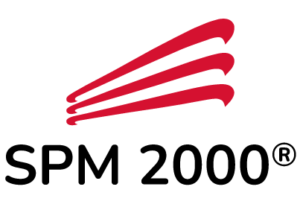The loss of skilled professionals inhibits the development of companies: Orders remain on hold. Customers lose trust. Sales are falling. We help corporations to stop this revenue-destroying development.
Stop the brain drain!
Fluctuation is detrimental to sales
For a variety of reasons, high staff turnover always leads to a loss of revenue:
- The company cannot grow as fast as the orders would allow.
- New professionals need to be trained and made familiar with their tasks. Valuable time passes before they are as productive as their predecessors.
- The loss of skilled workers leads to a loss of quality and customers lose confidence.
- The company has invested heavily in skilled employees who are now deploying their skills elsewhere, sometimes even with direct competitors.
How can companies curb staff turnover?
How we prevent staff turnover
Case study: The medium-sized communications service provider with 2,400 employees is doing well, but the company cannot grow as quickly as it would like due to the shortage of skilled workers. The company does succeed in recruiting new employees. At the same time, however, too many skilled professionals are leaving.
The managers of this company are convinced that they offer their employees the best conditions. They feel vindicated by successful recruiting, even though more skilled professionals leave the company than new ones join.
We were commissioned to identify the causes of the high staff turnover and to define and implement countermeasures.
Neuralgic points
We found that employees leave the company either after one week, after one month or after six months.
- After a week, new employees realize what is actually required of them and find that they receive little support.
- After one month, new professionals are trained to the point where they can take on more responsibility. At this point, they should be given special support. This is rarely the case.
- At the end of the probationary period after six months, managers unilaterally part with underperforming employees with a focus on turnover, without considering the consequences for the system as a whole.
Costs of staff turnover underestimated
In our analysis, we note:
The company does notice the high turnover. However, due to missing or non-transparent figures, it does not recognize how much turnover the fluctuation actually costs it.
Management, Human Resources and Operations did come up with measures to slow the churn. However, they implement the measures only half-heartedly because of the perceived low priority.
Nobody feels responsible
The company focuses unilaterally on sales and revenue. No one feels responsible for the fluctuation. Management, human resources and operations push the responsibility to each other.
Commitment is lacking, no clear goals, timelines and responsibilities are specified.
As a result, the operational pressure on managers and employees continues to increase. The company is responding with poorly thought-out strategies, and the problem gets worse.
Transparent figures make staff turnover a top priority in the boardroom
The actual costs of staff turnover, which we disclose in our analysis, are so high and relevant to sales that they immediately become a top priority for the management board.
While company management previously believed that they could easily replace departing employees with new ones, it has suddenly become much more important to retain skilled workers in the company in view of the unexpectedly high costs.
A jolt goes through the company
The change in awareness spreads quickly from the top to middle management and from there to the entire Group.
Managers now make it their business to retain their employees and invest in them instead of wearing them out.
Instead of formulating nice-sounding ideas and doing little, team leaders now name responsibilities, set goals, define timelines, and consistently implement actions.
Outflow reduced by 20 percent
The result of the shift in awareness is a 20 percent improvement in turnover rates in just six months. As a side effect, recruiting also becomes more successful.

